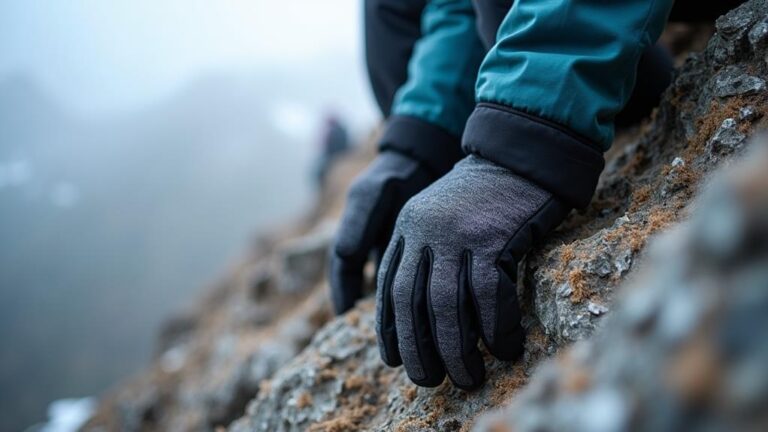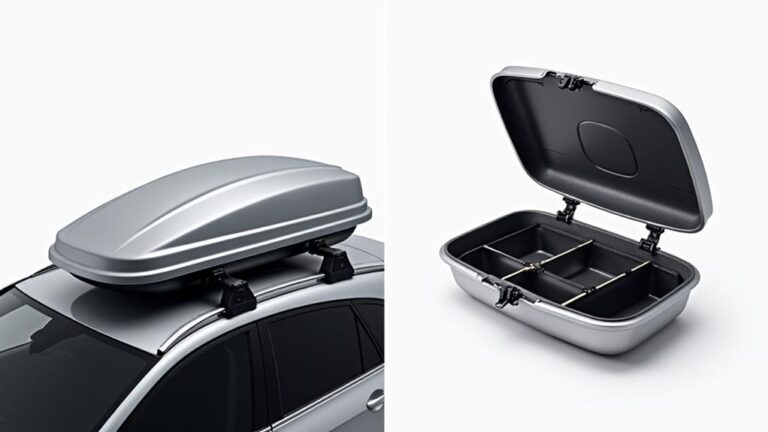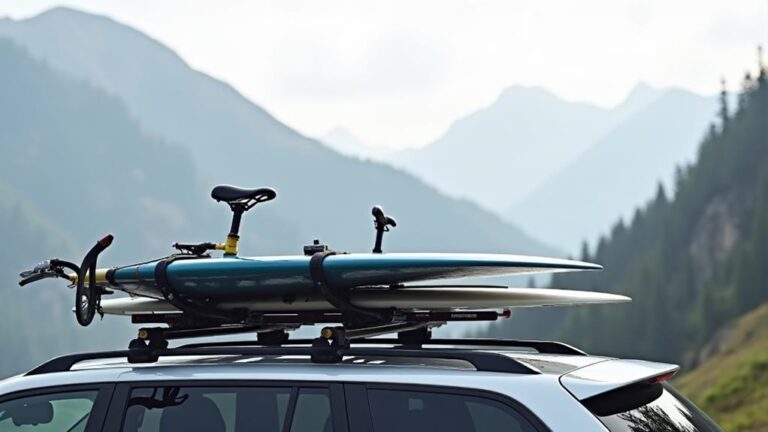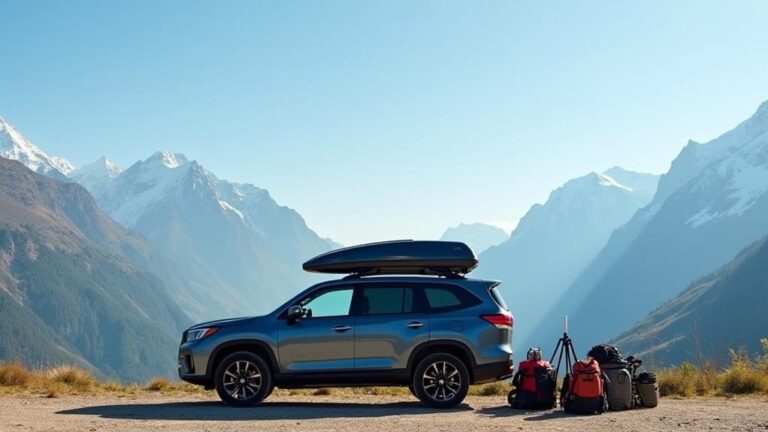You've probably experienced it before – reaching for a slippery rock or icy branch while hiking, only to have your gloves fail you. It's a moment of uncertainty that can quickly turn into a serious safety concern. That's why choosing the right hiking gloves is vital for a successful and enjoyable outing. When it comes to grip and warmth, what features should you look for? And how do you balance the need for dexterity with the need for protection from the elements? As you prepare for your next adventure, let's explore the best hiking gloves on the market that can help you stay safe and warm.
Key Takeaways
- Rubberized palms and fingers provide improved grip on technical trails, while grip patterns offer extra traction in wet conditions.
- Snug fit around the fingers and palms ensures a secure grip, preventing blisters and chafing.
- Insulated hiking gloves with Thinsulate or PrimaLoft insulation provide warmth without compromising dexterity.
- Fleece-lined palms and fingers add extra warmth, while water-resistant and breathable materials keep hands dry.
- Gloves with a waterproof and breathable membrane, such as Gore-Tex or eVent, prevent moisture buildup and maintain warmth.
Choosing the Right Hiking Gloves
When selecting hiking gloves, you're basically choosing a key interface between your hands and the rugged outdoors.
This interface should provide adequate hand protection, which involves considering the type of activities you'll be doing and the environment you'll be in. For example, if you'll be hiking in rocky terrain, you'll want gloves with reinforced palms and fingers to protect against abrasion and punctures. On the other hand, if you'll be hiking in cold and wet conditions, you'll want gloves with waterproof and breathable membranes to keep your hands dry and warm.
The fit of your hiking gloves is also pivotal, as it directly affects their performance and your overall comfort.
A snug fit is essential to prevent blisters and chafing, while also guaranteeing that your gloves don't compromise your dexterity. Look for gloves with adjustable cuffs and wrists to customize the fit, and consider gloves with pre-curved fingers to reduce fatigue. Additionally, consider the material and construction of the gloves, as these factors will also impact their durability and performance.
Top Brands for Hiking Gloves
When evaluating the top brands for hiking gloves, you'll need to weigh up an overview of the market leaders, such as Black Diamond, Patagonia, and The North Face.
A comparison of the materials used by these brands, including synthetic, leather, and hybrid options, will also help you make an informed decision.
Top Brands Overview
Choosing the right hiking gloves involves considering several key factors, including the brand reputation, durability, and performance. As you research top brands, you'll find that each one offers unique glove innovations that prioritize hand protection. When selecting a brand, consider their focus on technology, quality, and user feedback.
Some top brands stand out for their commitment to glove innovations and hand protection. Here's a comparison of three top brands:
| Brand | Glove Innovation | Hand Protection Features |
|---|---|---|
| The North Face | 3D Fit technology for improved dexterity | Reinforced palms and fingers for enhanced grip and durability |
| Black Diamond | BD.dry technology for waterproof and breathable gloves | Fleece-lined palms for warmth and grip |
| Patagonia | Regulator technology for temperature control | Silicone grip for improved dexterity and grip |
These brands have developed glove innovations that prioritize hand protection, including reinforced palms, breathable materials, and temperature control. By considering these features and factors, you can choose a brand that meets your hiking needs and preferences.
Glove Material Comparison
Top brands in the hiking glove market don't just innovate with technology; they also prioritize glove materials that balance performance, durability, and protection.
When choosing a pair of hiking gloves, you'll often come across two main types of materials: synthetic fabrics and natural fibers.
Synthetic fabrics, such as polyester, nylon, and spandex, offer excellent durability, water resistance, and breathability. These materials are often used in the palms and fingers of gloves to provide a secure grip and abrasion resistance.
Natural fibers, like wool and leather, offer excellent insulation, breathability, and moisture-wicking properties. Wool is a popular choice for hiking gloves due to its ability to retain warmth even when wet.
Leather, on the other hand, provides a high level of durability and protection against wind, cold, and rough terrain. Many top brands combine synthetic and natural fibers to create a hybrid material that offers the best of both worlds.
Brand Features Analysis
Several leading manufacturers dominate the hiking glove market, each offering unique features and technologies that cater to diverse hiking needs.
When evaluating top brands, you'll want to weigh their brand reputation, product quality, and specific features that cater to your hand protection needs.
The North Face is known for its high-quality gloves with advanced technology, such as grippy palms and touchscreen-compatible fingertips.
Black Diamond offers gloves with a focus on durability and dexterity, ideal for rock climbing and technical hiking.
Smartwool and Icebreaker are popular choices for gloves with merino wool insulation, providing warmth and breathability.
Patagonia and Arc'teryx are renowned for their environmentally-friendly and sustainable gloves, combining functionality with eco-friendliness.
Mammut and Ortovox offer gloves with a focus on waterproofing and wind resistance, perfect for harsh weather conditions.
When choosing a brand, weigh your specific hiking needs and the features that matter most to you.
Evaluating brand reputation, product quality, and specific features will help you make an informed decision and find the perfect gloves for your next hiking adventure.
Lightweight Hiking Glove Options
When hitting the trails in warm weather or on less demanding routes, you may prefer a lightweight hiking glove to keep your hands protected without overheating.
These gloves are designed for peak breathability, moisture-wicking properties, and a snug fit. They're perfect for summer treks where temperature control is key. Lightweight hiking gloves often feature mesh panels or perforations to enhance airflow, guaranteeing your hands stay cool and dry.
Finger flexibility is also a vital aspect of lightweight hiking gloves.
Look for gloves with articulated fingers and palms made from stretchy materials like synthetic leather or nylon. This allows for a full range of motion, making it easier to grasp trekking poles or perform delicate tasks. Some lightweight gloves also feature touchscreen-compatible fingertips, enabling you to use your smartphone or GPS device without removing your gloves.
When choosing a lightweight hiking glove, consider the activity level, terrain, and weather conditions to guarantee you select a glove that provides the right balance of protection and dexterity. By doing so, you can enjoy a more comfortable and confident hiking experience.
Insulated Hiking Gloves Review
Insulated hiking gloves are your go-to protection for cold, wet, or rugged outdoor excursions.
You'll want to look for features such as synthetic insulation, like Thinsulate or Polarguard, which trap warm air and maintain hand temperature. When choosing insulated hiking gloves, ponder the type of insulation, as different materials offer varying levels of warmth and weight.
Another key aspect of insulated gloves is the type of outer shell used. Look for materials like nylon or polyester that offer durability and wind resistance.
When it comes to hand protection in cold weather, insulated gloves provide a crucial barrier between your skin and the elements.
The insulation helps to prevent heat loss, while the outer shell protects against wind, rain, and snow. You'll also want to ponder the fit of the gloves, as a snug fit will help to maintain warmth.
Look for features like adjustable cuffs and a secure fit around the wrist to prevent cold air from entering. By choosing the right insulated hiking gloves, you'll be able to maintain hand protection and warmth in even the harshest cold weather conditions.
Best Waterproof Hiking Gloves
When selecting the best waterproof hiking gloves for your needs, you should consider key features such as membrane type, seam taping, and gusseted fingers.
You'll also want to balance insulation and breathability to maintain warmth without accumulating moisture inside the glove.
Additionally, you'll need to assess grip and durability by evaluating palm materials, finger dexterity, and overall construction quality.
Key Waterproof Features
Several features distinguish the best waterproof hiking gloves from their non-waterproof counterparts.
When it comes to achieving complete waterproofing, a waterproof membrane is essential. This thin, semi-permeable layer, often made from materials like Gore-Tex, eVent, or similar technology, prevents water from entering the glove while allowing moisture to escape. This membrane is usually sandwiched between the outer shell and the inner liner of the glove.
To further enhance the waterproofing, seal technology is applied to the seams and stitching of the glove. This involves applying a thin layer of sealant to the stitching or using a specialized tape to cover the seams, preventing water from seeping in through the stitching.
Some gloves also feature a gusseted wrist or a velcro closure at the wrist to prevent water from entering through this area. Additionally, the best waterproof hiking gloves often have a waterproof treatment applied to the outer shell, providing extra protection against rain and snow.
Insulation and Breathability
The best waterproof hiking gloves not only provide protection from the elements but also need to regulate your hand temperature to guarantee peak performance. Insulation and breathability play a vital role in maintaining a comfortable hand temperature, allowing you to focus on your hike.
To achieve ideal insulation and breathability, you'll want to look for gloves that incorporate advanced materials and technologies. Thermal regulation is achieved through the use of insulating materials such as synthetic insulation (e.g., Polarguard, Thinsulate) or natural insulation (e.g., down, wool).
| Insulation Type | Moisture Management |
|---|---|
| Synthetic Insulation | Quick-drying, breathable, and moisture-wicking properties |
| Natural Insulation | Breathable, but may lose insulating properties when wet; requires waterproof treatment |
| Hybrid Insulation | Combines synthetic and natural insulation for balanced thermal regulation and moisture management |
When choosing the best waterproof hiking gloves, consider the type of insulation and its ability to manage moisture. This will help you maintain dry hands and regulate your body temperature, ensuring a comfortable and enjoyable hike.
Grip and Durability
You need a secure grip on your trekking poles and any other gear to maintain stability and prevent accidents while hiking. This is especially vital on uneven terrain or in wet conditions.
Look for hiking gloves with textured palm surfaces and fingertips that provide ridge traction, allowing you to grasp poles or rocks firmly. A combination of rubberized palms and synthetic grip materials, such as silicone or PU coatings, can offer excellent grip on various surfaces.
In addition to grip, consider the durability of the gloves. A reinforced palm with padding and protection can help prevent blisters and abrasions.
Look for gloves with palm protection features, such as goat leather or synthetic palm overlays, which can withstand rough handling and harsh weather conditions. The glove's construction should also be durable, with secure stitching and a snug fit that prevents excessive wear and tear. By prioritizing grip and durability, you can choose hiking gloves that provide the confidence and security you need to tackle challenging trails.
A secure grip and durable construction can make all the difference in your hiking experience.
Hiking Gloves for Cold Weather
Frequently, hikers face harsh conditions in cold weather, and their gloves are crucial in maintaining dexterity and preventing frostbite.
You need gloves that provide warmth, breathability, and moisture-wicking properties to prevent cold fingers. Look for gloves with a waterproof and breathable membrane, such as Gore-Tex or eVent, to keep your hands dry and warm.
When choosing hiking gloves for cold weather, consider the following key features:
- Insulation: Synthetic insulation, such as Polarguard or Thinsulate, provides warmth without bulk.
- Material: Choose gloves made from materials that provide warmth, breathability, and moisture-wicking properties, such as fleece, wool, or synthetic fabrics.
- Fit: A snug fit is essential to prevent cold air from entering the glove and to maintain dexterity.
- Linings: A removable liner or a glove with a built-in liner can help prevent cold fingers and frostbite prevention.
Touchscreen Compatible Gloves
As you navigate the trails with the right cold-weather gloves, don't forget about another essential aspect of modern hiking: staying connected on the go. Touchscreen compatible gloves are a great option for hikers who need to stay connected while on the trails. These gloves feature special fingertips that allow you to interact with your smartphone or other touchscreen devices.
When choosing touchscreen compatible gloves, consider the following factors:
| Feature | Description | Importance |
|---|---|---|
| Finger sensitivity | Measures the glove's ability to accurately detect finger movements on a touchscreen | High |
| Glove dexterity | Refers to the glove's ability to perform fine motor tasks, such as tapping or swiping | Medium |
| Compatibility | Confirms the glove works with a variety of touchscreen devices, including smartphones and GPS devices | High |
Look for gloves with high finger sensitivity and compatibility to guarantee seamless interaction with your devices. While glove dexterity is important, it may not be as vital for basic touchscreen interactions. By choosing the right touchscreen compatible gloves, you can stay connected on the go without sacrificing warmth or grip.
Gloves With Reinforced Palms
When shopping for gloves with reinforced palms, consider the following key features:
- *Palm material*: Look for gloves with palms made from durable materials, such as synthetic leather or rubber, for superior palm protection.
- *Grip patterns*: Choose gloves with grip patterns that provide traction and control, such as textured palms or fingers.
- *Reinforced stitching*: Opt for gloves with reinforced stitching at the palm area for added durability.
- *Palm padding*: Consider gloves with additional padding at the palm area for extra protection and comfort.
A well-designed reinforced palm can make all the difference on the trail, providing you with the confidence to tackle rough terrain without worrying about your gloves failing you.
Hiking Gloves for Dexterity
For ideal dexterity, look for hiking gloves that balance protection and flexibility. When it comes to hiking gloves for dexterity, you'll want to focus on features that enhance finger sensitivity and hand flexibility. These gloves should allow you to grasp and manipulate objects with ease, making them ideal for tasks that require precision, such as traversing technical trails or using trekking poles.
| Feature | Description | Benefits |
|---|---|---|
| Synthetic or stretchy materials | Gloves made from synthetic or stretchy materials like nylon, polyester, or spandex | Provides flexibility and allows for a full range of motion |
| Minimal padding | Gloves with minimal padding on the palms and fingers | Enhances finger sensitivity and allows for better grip |
| Articulated fingers | Gloves with articulated fingers that mimic the natural shape of your fingers | Allows for better dexterity and flexibility |
| Touchscreen-compatible fingertips | Gloves with fingertips that are compatible with touchscreen devices | Allows you to use your phone or GPS device without removing your gloves |
When choosing hiking gloves for dexterity, consider the activities you'll be doing and the level of protection you need. If you'll be tackling technical trails or using trekking poles, look for gloves that prioritize flexibility and finger sensitivity.
Frequently Asked Questions
Can I Use Hiking Gloves for Other Outdoor Activities?
You can repurpose hiking gloves for cross-training, visiting a ski resort, or other outdoor pursuits, given their versatility and grip features, but consider the activity's specific demands and the gloves' durability and insulation.
How Often Should I Wash My Hiking Gloves?
You wash your hands 8-10 times daily, but glove maintenance is often overlooked. For ideal hand hygiene, wash your gloves every 5-7 uses, or immediately after exposure to harsh chemicals or bodily fluids.
What Is the Average Lifespan of Hiking Gloves?
You'll find the average lifespan of hiking gloves varies based on glove maintenance and frequency of use, typically lasting 1-3 years while effectively providing hand protection from abrasions and harsh elements.
Can I Wear Hiking Gloves in Warmer Weather?
You can wear hiking gloves in warmer weather, but consider lightweight, breathable options for summer treks to maintain dexterity and grip in warm conditions without overheating. Look for moisture-wicking fabrics and ventilation features.
Do Hiking Gloves Affect Climbing Performance?
You'll find that wearing hiking gloves can compromise finger dexterity, potentially impacting your climbing performance. However, they also reduce hand fatigue by absorbing shock and providing grip, which can be beneficial on long or technical climbs.
Conclusion
As you lace up your hiking boots and prepare to tackle rugged trails, remember that the right gloves can be your best companion. Imagine trudging through snow-covered peaks with warm, dry hands, or exploring rocky terrain with confidence-boosting grip. With the best hiking gloves for grip and warmth, you'll be unstoppable. From insulated palms to waterproof membranes, invest in gloves that'll keep up with your outdoor adventures and leave you feeling empowered and unbridled.












